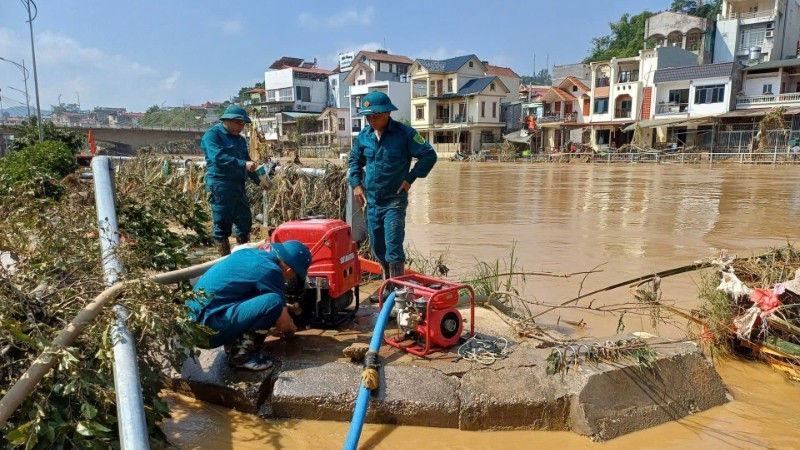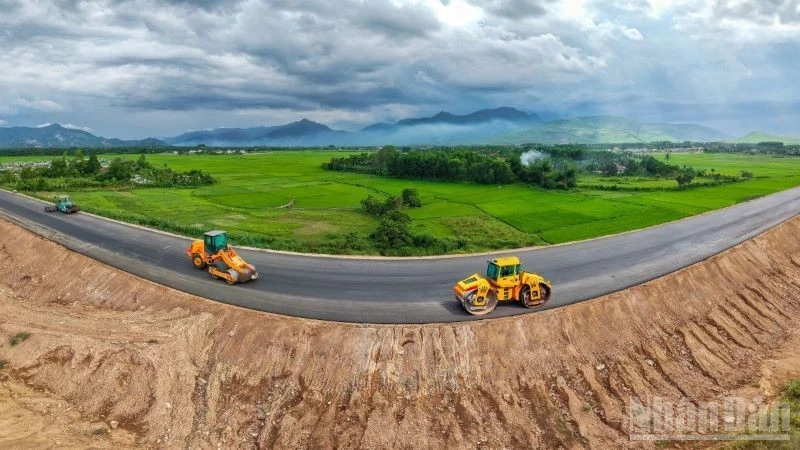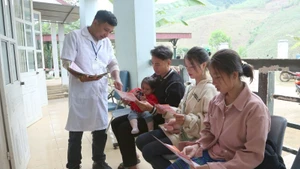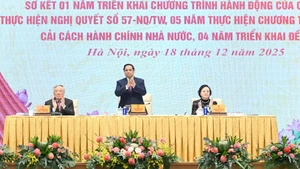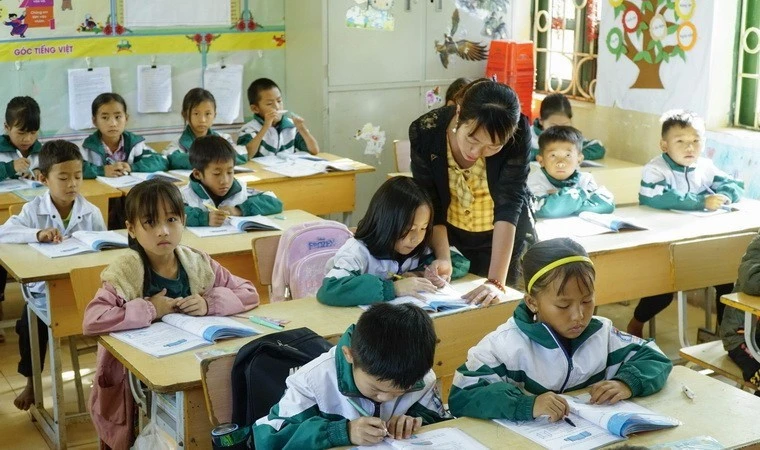Nguyen Thang from Duc Xuan Ward and 20 relatives helped his brother clean up his flooded house in Phan Dinh Phung Ward on October 9, one of the hardest-hit areas in Thai Nguyen City. “As the water receded, we had to sweep the mud away with it,” Thang said.
Across the city, residents cleared drains and collected waste piled high with mud and debris. “There’s so much rubbish; leaving it would cause pollution, so everyone joined in to clean up quickly,” said sanitation worker Duong Thi Thanh.
More than 600 officers and soldiers from Regiments 209, Division 312, and Brigade 210, were deployed to disinfect and clean administrative areas, Vo Nguyen Giap Square, cultural centres, and schools.
The Thai Nguyen Centre for Disease Control sprayed disinfectants and distributed over five tonnes of Cloramin B to localities while instructing residents on water treatment.
The electricity supply was restored to most districts by October 10, and water companies operated at full capacity to restore service.
Telecommunications firms, including Viettel and Thai Nguyen Telecom, worked overnight to repair hundreds of submerged base stations.
Chairman of the Thai Nguyen Provincial People’s Committee, Pham Hoang Son, instructed all sectors and localities to mobilise maximum resources for environmental clean-up, disinfection, and disease prevention, with priority given to schools, hospitals, government offices, markets, and residential areas.
The Provincial Military Command and Police deployed thousands of officers and soldiers to join residents in the clean-up effort. Thanks to the concerted efforts of the authorities and the public, by midday on October 10, most streets had been cleared.
In Lang Son, teachers and students at That Khe Secondary School, supported by soldiers from Regiment 123 and local residents, cleaned classrooms so the school could reopen by October 9.
Lang Son’s health sector intensified post-flood disease prevention efforts, sending teams to every village and hamlet to disinfect affected areas, treat water sources, and guide residents on environmental hygiene practices. The province’s telecommunications network also suffered severe damage, with around 70 BTS stations losing power and becoming isolated. “We stockpiled fuel and mobilised all available personnel to carry out repairs. By the end of October 9, most stations had resumed operation,” said Bui Dinh Khoa, Director of Viettel Lang Son.
The company also deployed three Starlink devices, satellite-based transmitters that maintain internet and telecommunications connections independent of fibre-optic cables or mobile networks, to maintain connectivity in isolated communes such as Van Nham and Yen Binh.
Lang Son’s power sector also sustained heavy losses, with nearly 46,500 customers left without electricity and many power poles and meters broken or damaged.
In Cao Bang, the authorities of Thuc Phan Ward, the hardest-hit area in Cao Bang, mobilised all available personnel, vehicles, and equipment to clear mud and debris on October 10. The ward launched a mass clean-up campaign, with each residential group assigning at least ten volunteers to help clear roads and assist elderly or solitary households in cleaning their homes.
Armed forces, police units, and thousands of residents joined the effort, completing the clean-up of more than 90% of main streets by noon the same day. Participating in the clean-up at 1/6 Kindergarten, Lieutenant Nguyen Duy Tung, Platoon Leader of Battalion 5, Regiment 852 under the Cao Bang Provincial Military Command, said that 100% of his platoon’s personnel were deployed to help residents and local agencies restore sanitation and reorganise belongings.
The Cao Bang Water Supply Company suffered extensive damage as many pumping stations were severely flooded, with debris and mud flowing into operation facilities. “The company mobilised all available manpower to repair pumps and pipelines and restore water supply from the afternoon of October 8,” reported Deputy Director Nong Minh Tien.
According to the provincial electricity hotline, 385 transformer stations and 270 power lines were affected, disrupting electricity for nearly 30,000 customers. Workers worked around the clock to restore the grid, reconnecting electricity to more than 27,000 households.
In border commune Can Yen, over 300 households were cut off due to landslides and flooding. Rescue forces trekked along mountain trails to deliver essential goods and meals.
Thanks to the determined leadership of local authorities, the dedication of emergency forces, and the solidarity of residents, Thai Nguyen, Lang Son, and Cao Bang have gradually overcome the floods’ aftermath, restoring environmental safety and normal life.
Vice President of the Central Committee of the Viet Nam Fatherland Front, Ha Thi Nga, stated that the Committee is committed to allocating the relief funds as promptly, properly, and transparently. She affirmed that every sum received will be distributed immediately to the rightful beneficiaries to ensure effectiveness and help flood-affected residents quickly stabilise their lives.
